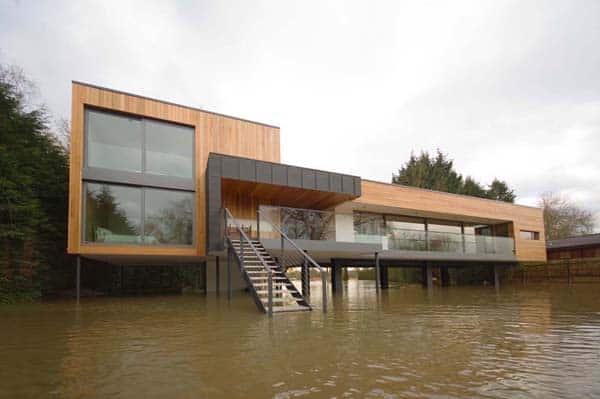
The clients had moved into a rather ordinary brick and tile 1970’s house on the banks of the river Loddon in Wargrave, Berkshire, England in early 2005 and wished to rebuild using a system-built house. Designed by John Pardey Architects, the brief segregated the 2,604 square foot (242 square meters) house into three distinct zones; an open living space; a guest room/ gym area; and a bedroom area. The architects based their concept on these three elements to create wings that adopt a pinwheel form. The whole ensemble is raised up on columns to deal with the fact that the river is subject to seasonal flooding to a depth of just over one meter.
A dark zinc-clad wing is pushed forward to receive a staircase, with a window-filled room off to the side which contains a guest suite that doubles up as a gym. The stair arrives onto a an entrance balcony, with a door leading into a central hall space, this is the day room, dedicated to outdoor living and leads out onto a large deck, complete with hot tub beneath a zinc canopy. Following the zig-zag of the pinwheel, a staircase then leads down to a garden deck, with a boardwalk that arrives at a landing stage on the river’s edge. To one side of the central element is a long, open living wing, resting on a cantilevered steel table that frames parking space.
The house is run by a computerized building management system that controls not just heating demands, but also lighting, solar control and audio-visual installations. The walls, floors and roofs are highly insulated using sheep’s wool insulation to create a highly efficient home. The house is composed of natural materials that weather well, and an architecture that seeks out an embrace and celebration of nature. Via
Visit the website of John Pardey Architects here.
Photos: Richard Powers & John Pardey Architects

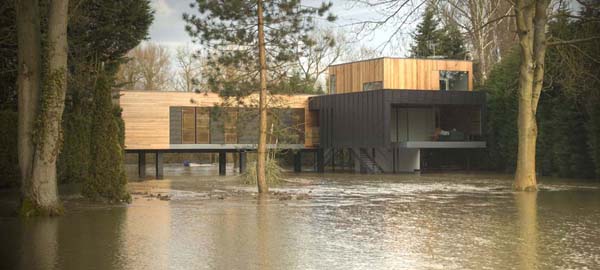
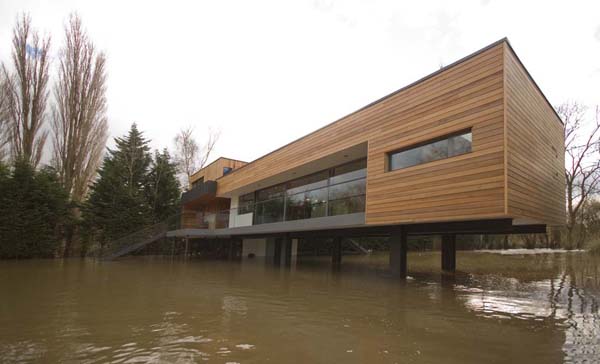

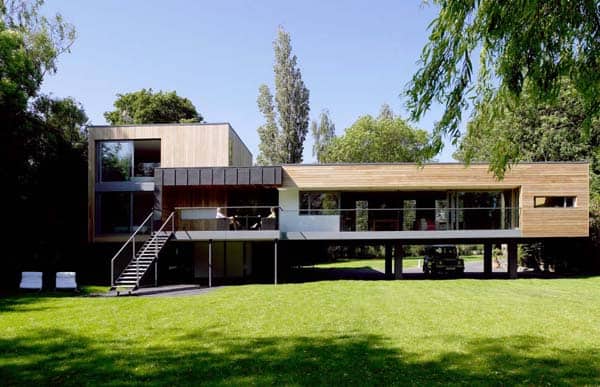
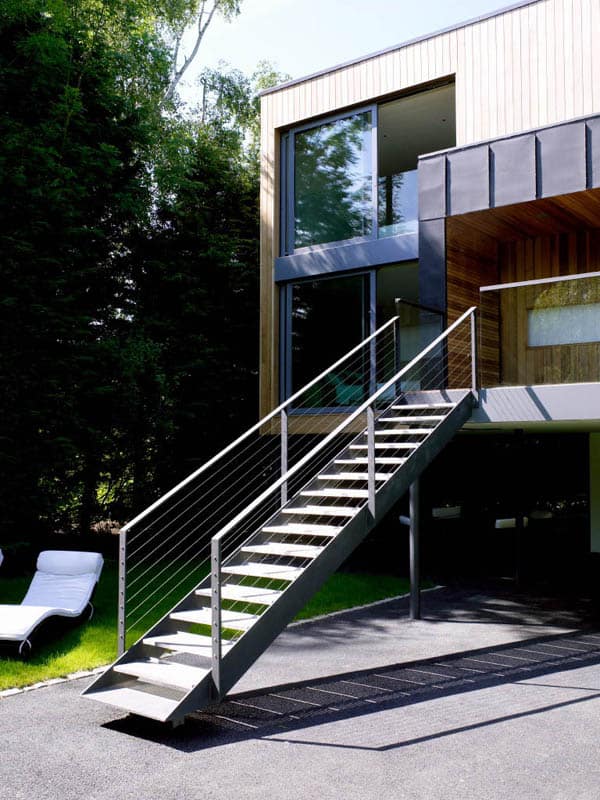
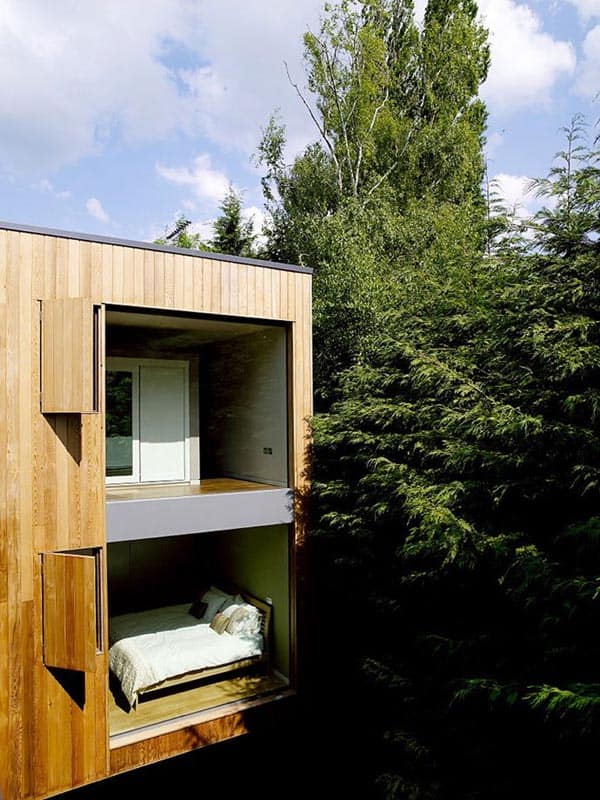
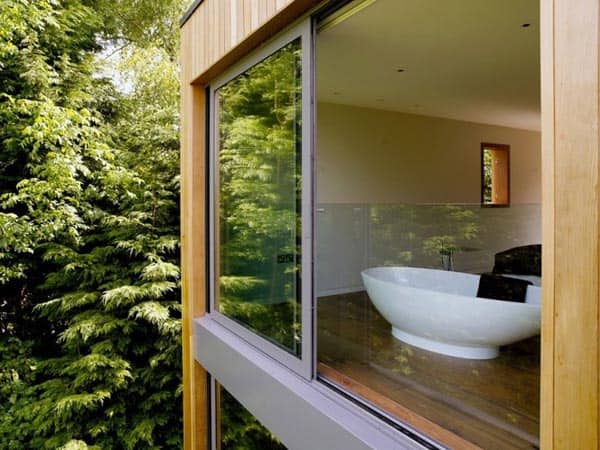
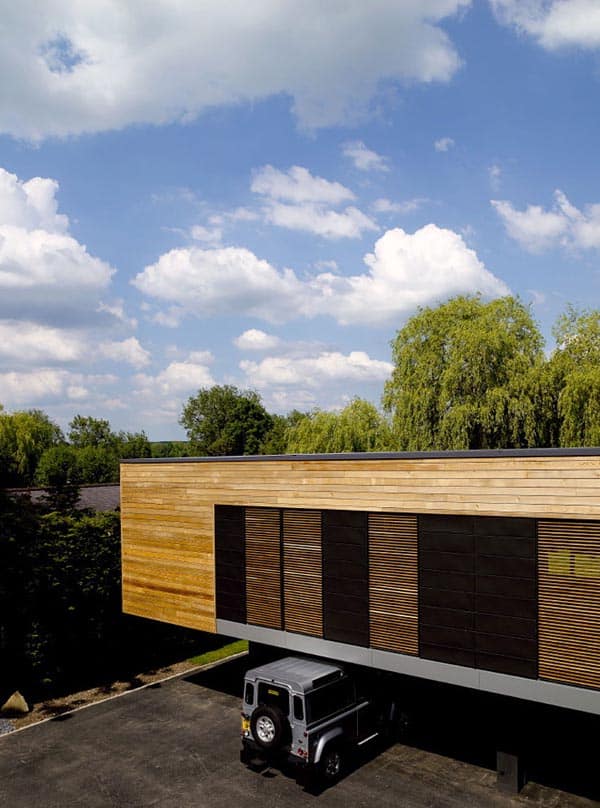
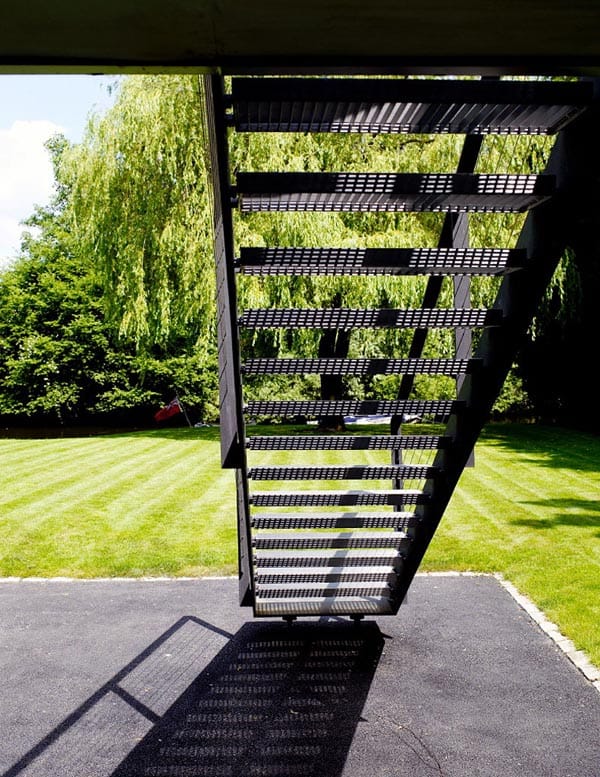
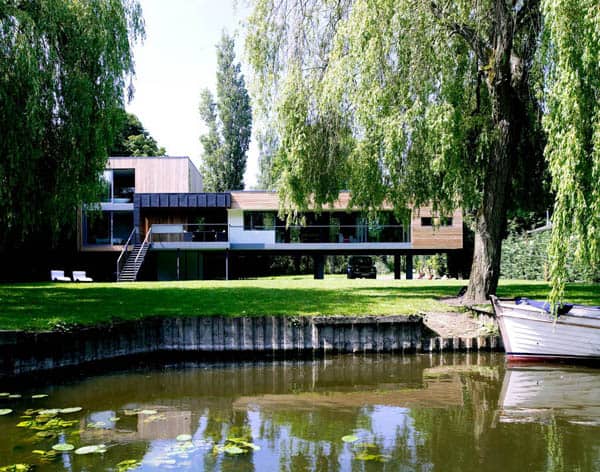
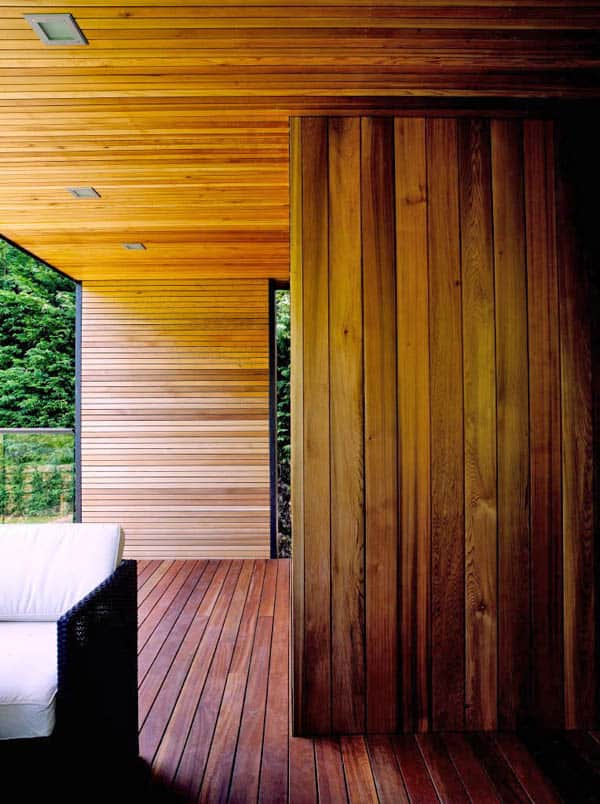

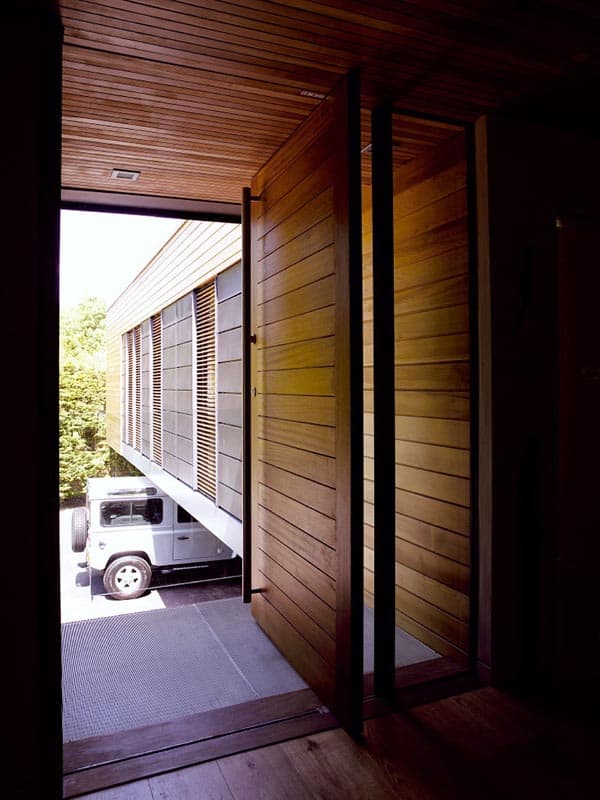
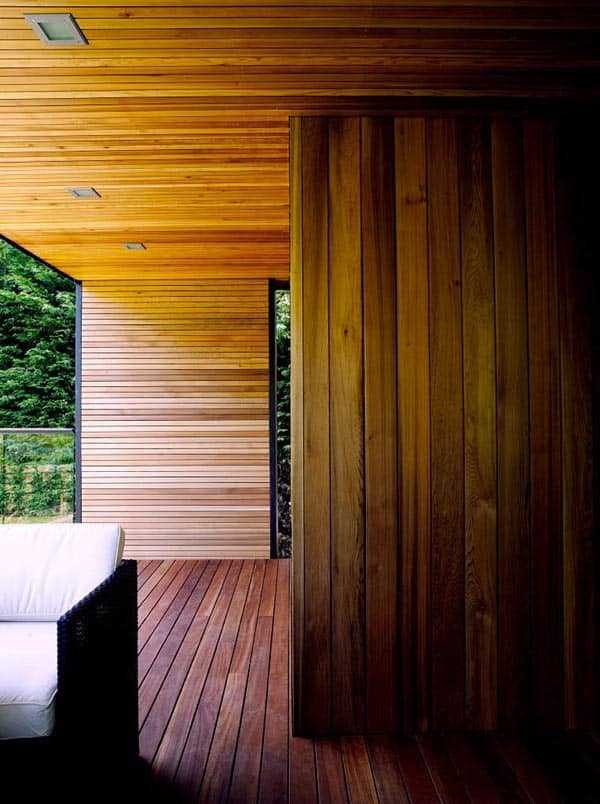
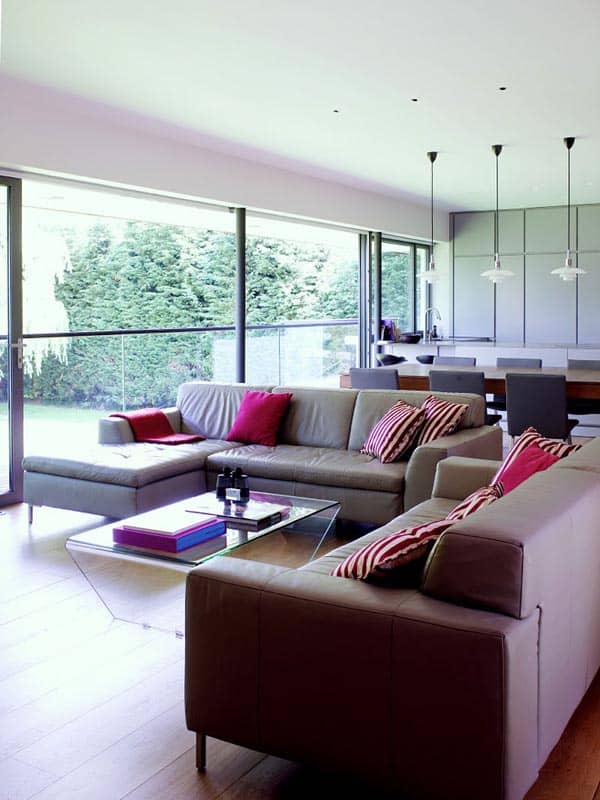

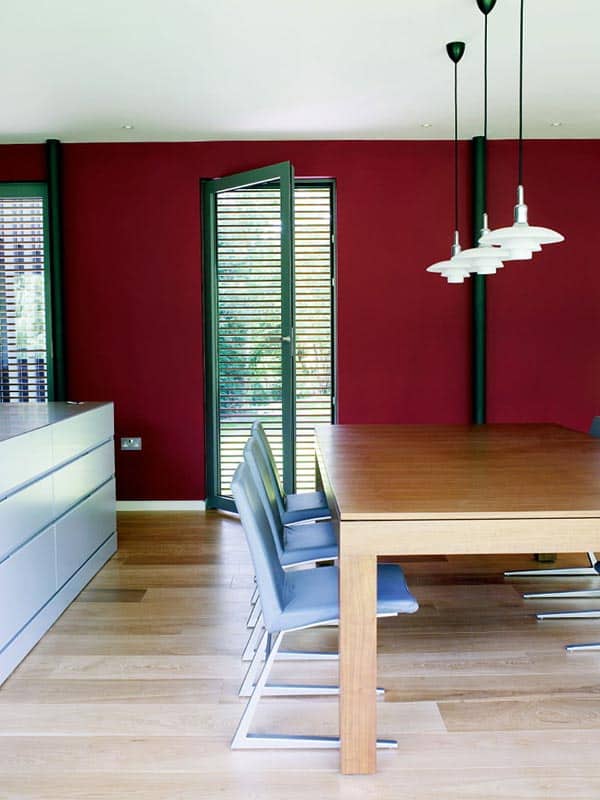
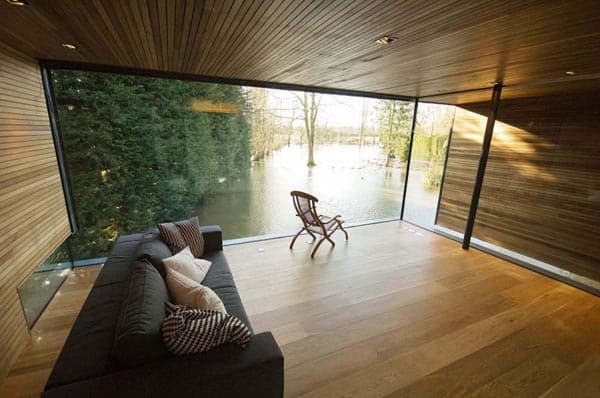
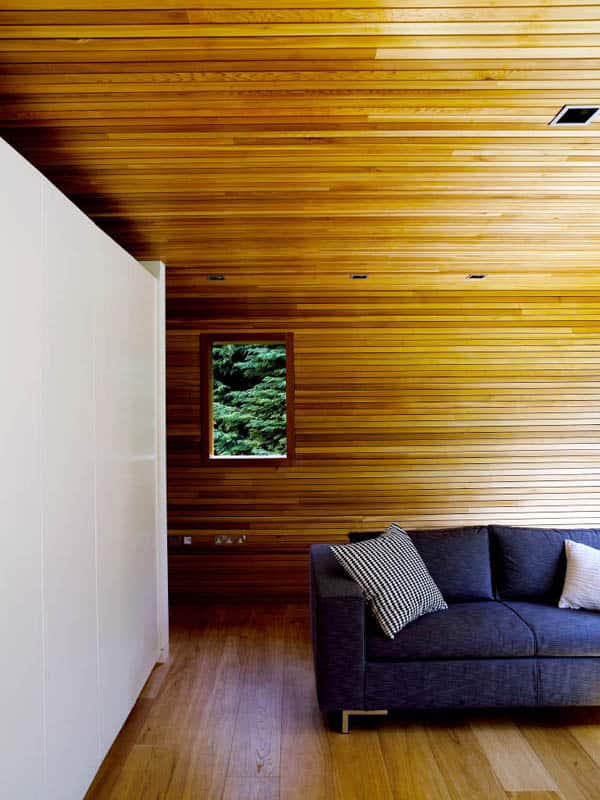
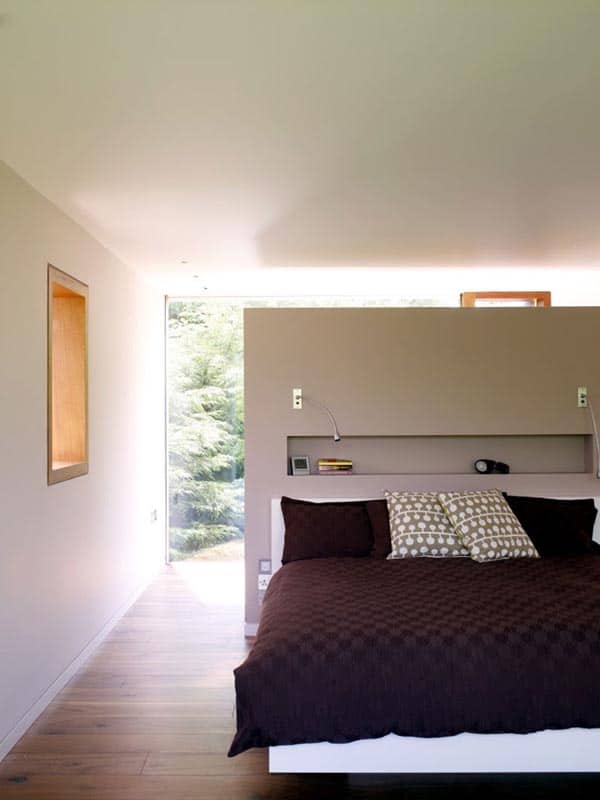
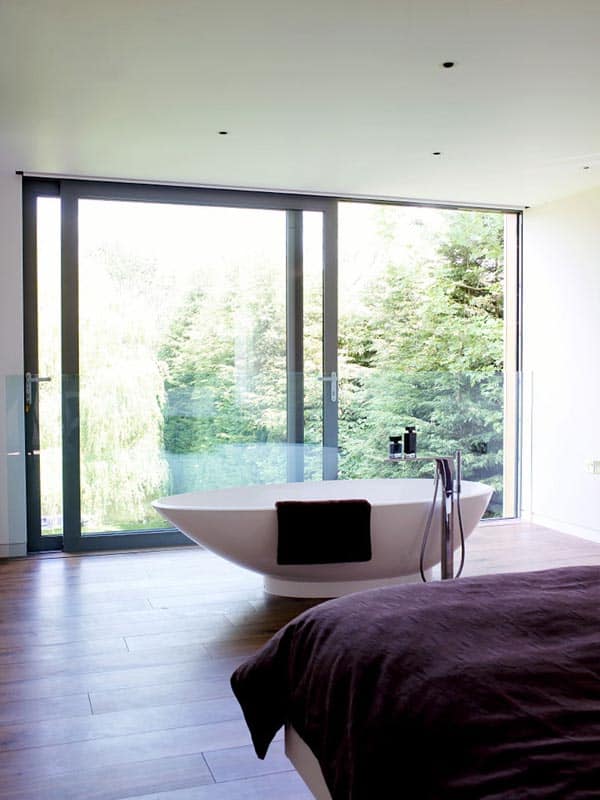
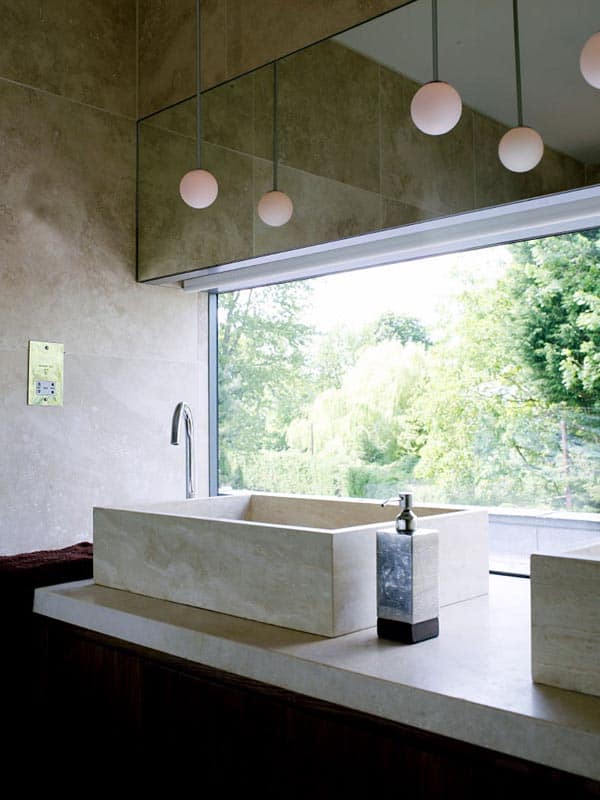
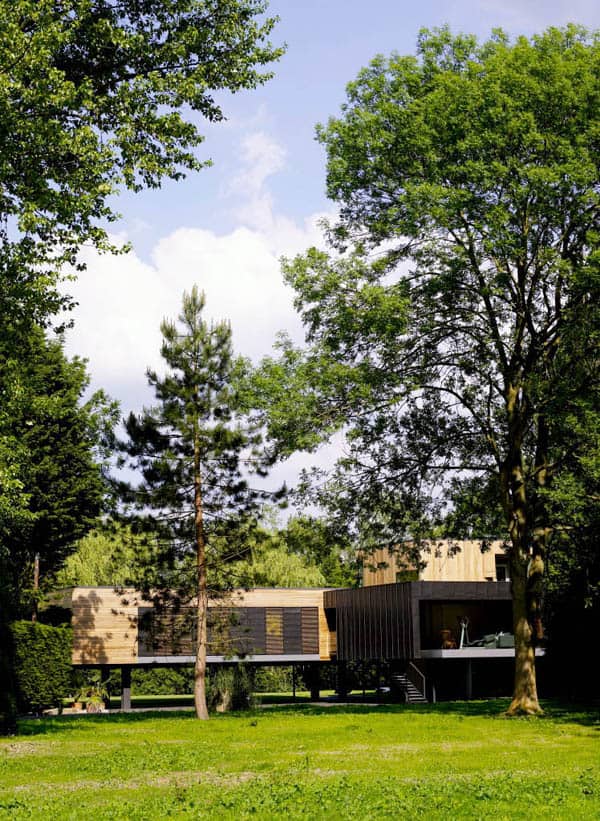
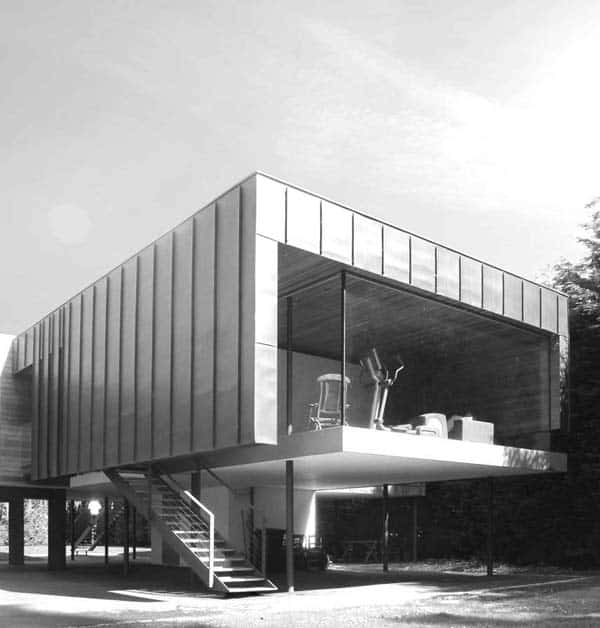
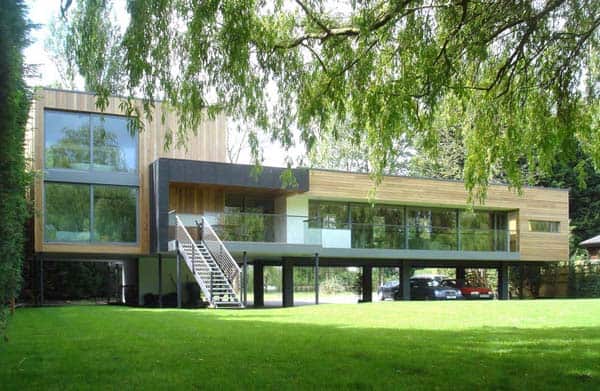
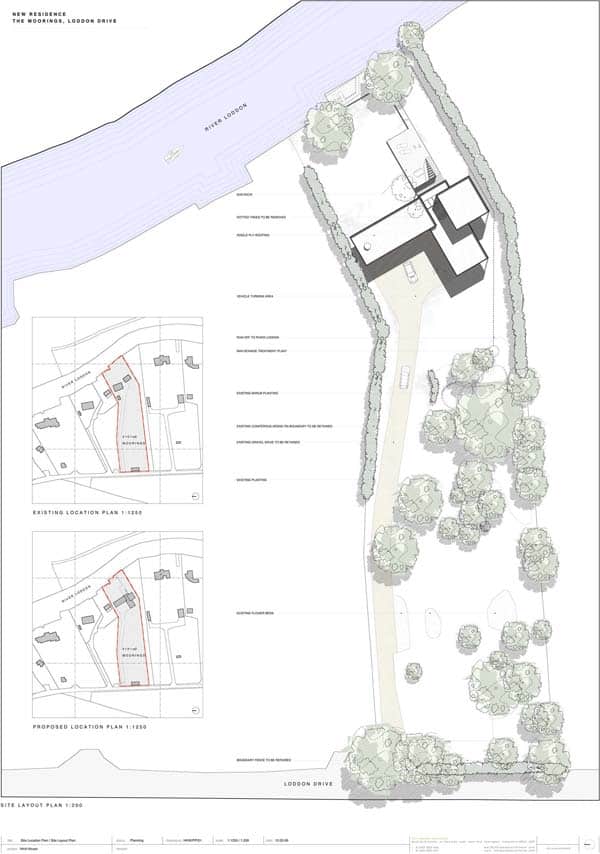
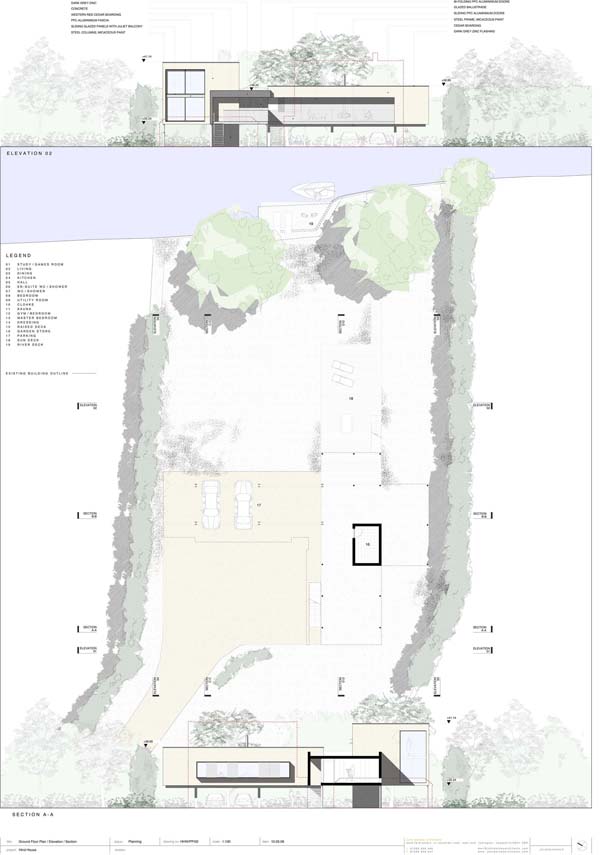
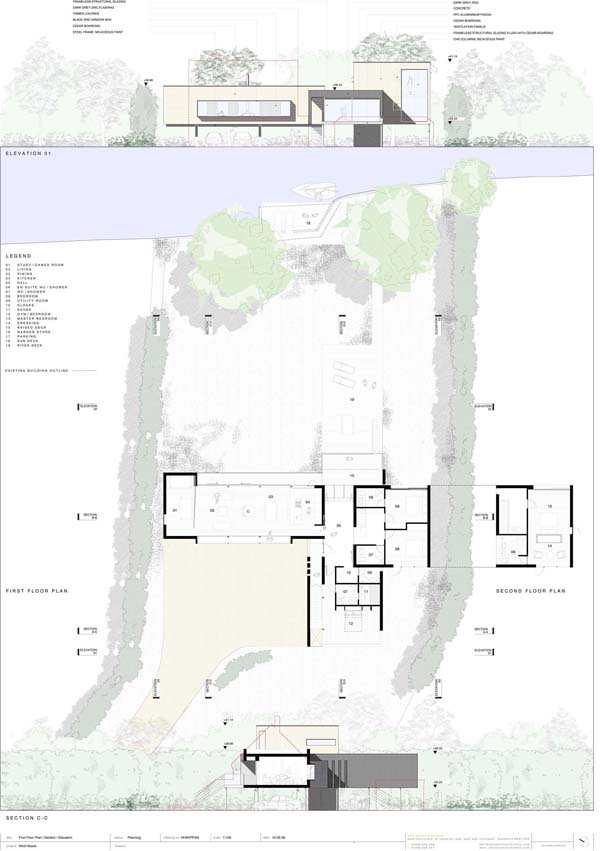
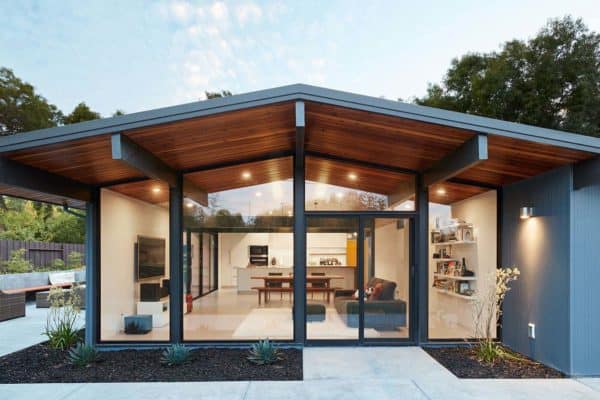
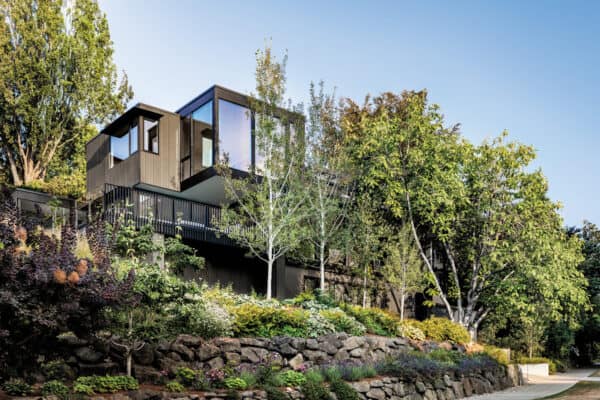
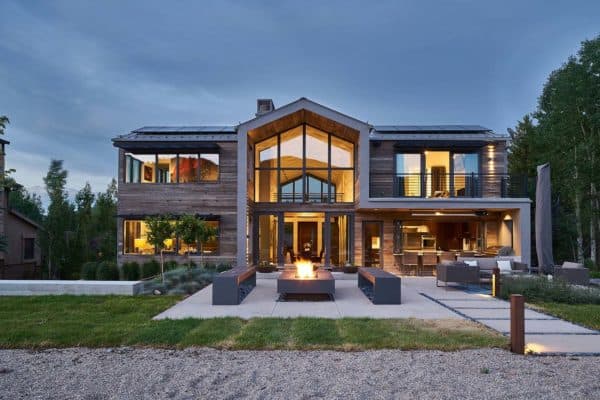
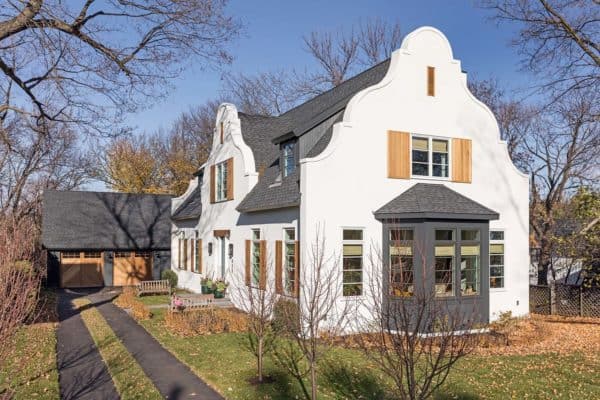
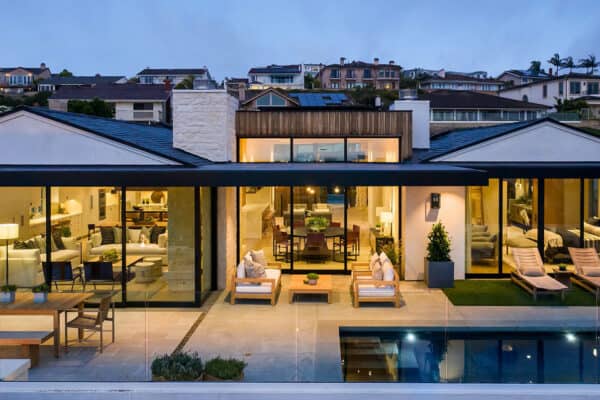

0 comments